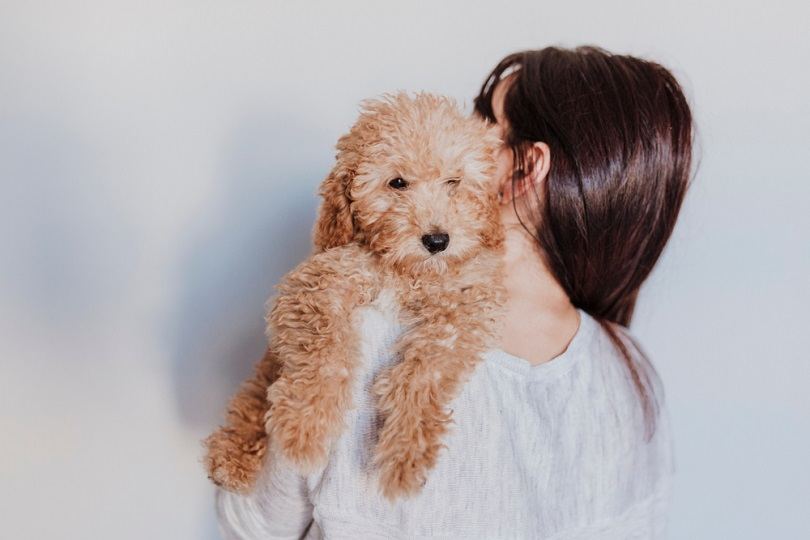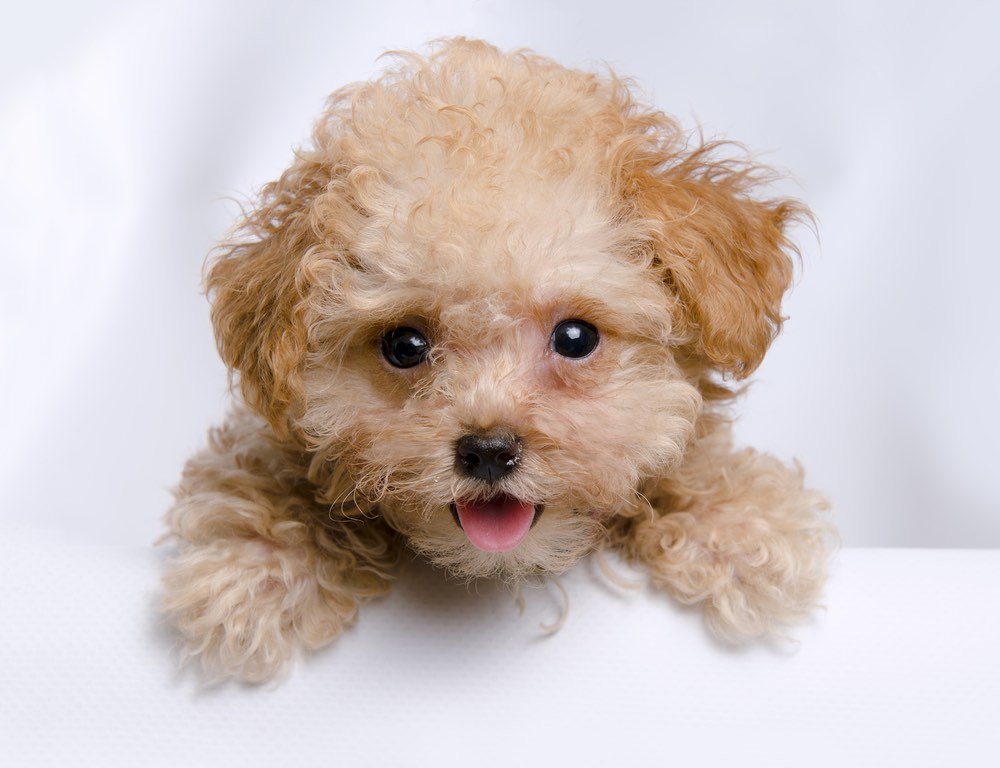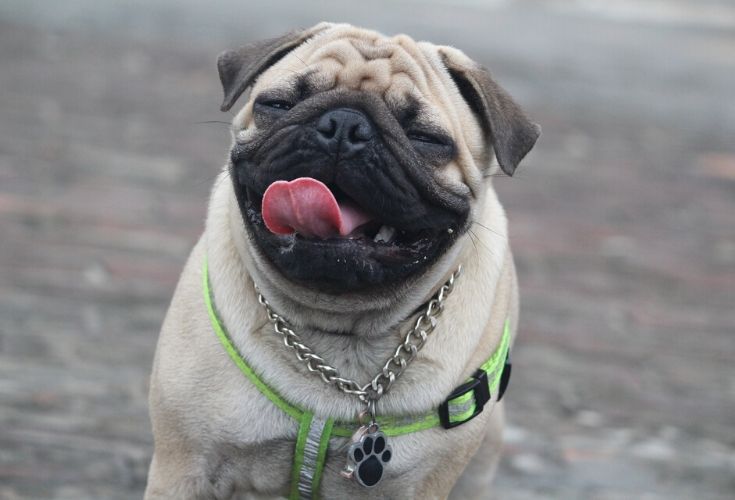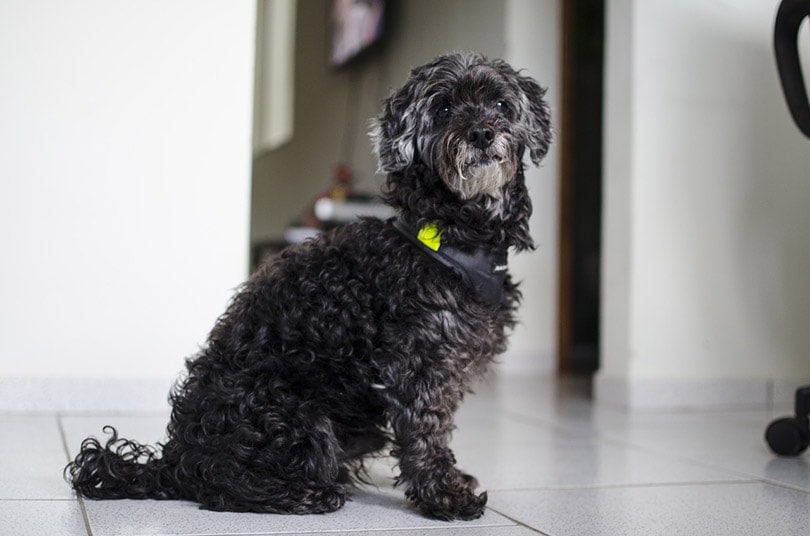How Big Do Toy Poodles Get? (Size + Growth Chart)

Updated on

If you’re on the hunt for a perfectly portable, sweet, and friendly companion dog, you can’t go wrong with a Toy Poodle1! This little dog is intelligent, self-confident, and behaves the same way as a Standard Poodle, only it’s all done in a much smaller package.
When raising a Toy Poodle, you’ll witness your dog reaching key milestones as he ages and grows. It’s wise to keep track of your Toy Poodle’s progress to ensure he’s growing as he should, as each milestone requires specific care and nutritional requirements.
To help you, we’ve compiled the following information about the Toy Poodle breed, as well as a size and growth chart. You can use the chart to monitor your dog’s growth rate. Just remember that every dog is unique and that the info in the chart is a general overview since not all Toy Poodles progress at the same rate.
Facts About Toy Poodles
The Toy Poodle is the smallest member of the Poodle family and one of the most popular breeds in the world, thanks to their small size, friendly disposition, and adaptability. The highly trainable Toy Poodle is a dog that loves being the center of attention. Nothing makes this little dog happier than putting on a show for his human family.
The Toy Poodle is a dog that pays close attention to their owner, learns quickly, and enthusiastically responds to positive training methods. This intelligent and lively pup needs plenty of physical activity and mental stimulation to live a happy life.
The Toy Poodle is athletic, agile, and graceful on his feet. He has a non-shedding, short, and curly coat that comes in various colors. While the Toy Poodle is playful, they are not the best choice for a family with small children. Toy Poodles can be nervous and overwhelmed by the mischief and roughhousing of small kids.
Toy Poodle Size and Growth Chart

The chart below should be used as a guideline only because the heights and weights of a Toy Poodle can vary, depending on the individual dog. This chart may prove insightful if you’re unfamiliar with Toy Poodles and how they grow.
A mature Toy Poodle will stand no taller than 10 inches and weigh between 4 and 12 pounds.
| Age | Weight Range | Height Range |
| 3 Months | 2–6 Pounds | Up to 8 Inches |
| 6 Months | 4–8 Pounds | Up to 9 Inches |
| 12 Months | 4–11 Pounds | Up to 10 Inches |
| Adult | 4–12 Pounds | Up to 10 Inches |
Chart source: https://puppyweightcalculator.com/poodle-size-guide/
When Does a Toy Poodle Stop Growing?
Toy Poodles grow rapidly and reach maturity at around 6–7 months. Your Toy Poodle will likely stop growing taller at this time, but he will continue filling out and putting on weight.
Toy Poodles aren’t the only dogs that beef up once they’re finished growing tall, as it’s common for many breeds.
Factors Affecting the Size of a Toy Poodle

A few factors can affect the size of a Toy Poodle. If a Toy Poodle has intestinal worms when young, the worms can rob the dog’s body of essential nutrients to slow their growth.
Another factor that plays a role in the size of a Toy Poodle is whether or not the dog was spayed or neutered. It’s been found that early spaying and neutering have been directly related to increased body weight.
Of course, a Toy Poodle eating a low-quality diet full of carbohydrates and fats will likely gain weight and become obese. To keep your Toy Poodle at a healthy weight, feed your pup high-quality dog food and take it easy with the treats.
Ideal Diet for Maintaining a Healthy Weight
To ensure your Toy Poodle can maintain a healthy weight, you should choose a dog food that meets the unique dietary requirements of a canine. Look for a brand with the Association of American Feed Control Officials (AAFCO) statement on the label, which tells you the formula is complete and balanced.
In case you’re unfamiliar with this organization, the AAFCO is responsible for establishing the nutritional standards for complete and balanced pet foods in the United States. It’s critical to remember that a dog has varying nutritional needs during the different stages of its life.
While it’s fine to give an adult dog all-purpose dog food, a growing puppy should be fed puppy food specifically formulated with extra fat and calcium to meet the nutritional needs of a growing pup. The same holds true for an aging dog that doesn’t need as many calories. In this case, senior dog food would be best.
How to Measure Your Toy Poodle
To determine how much your Toy Poodle is growing, get into the habit of measuring your little buddy. Once you understand how to measure your dog, you’ll find it easier to buy harnesses, collars, and doggie clothes.
When taking the measurements of your dog, always do it when he’s standing up and use a flexible tape measure. To measure the body length of your Toy Poodle, measure along the top of his spine from the base of the neck to the base of his tail. To measure girth, measure around the largest part of your Toy Poodle’s rib cage, right behind the front legs.
The neck girth can be measured by positioning the tape measure from the withers to the top of the chest and then around your dog’s neck.
Conclusion
Toy Poodles make wonderful companion dogs, and they’re one of the most charming and adorable canines. They’re intelligent and affectionate, and they love participating in the family’s activities. These charming, lap-sized dogs don’t get too big, which makes them ideal for living in small spaces. However, they are lively little dogs with plenty of energy, so be prepared to take several long walks a day.
See Also:
Feature Image Credit: NDAB Creativity, Shutterstock













